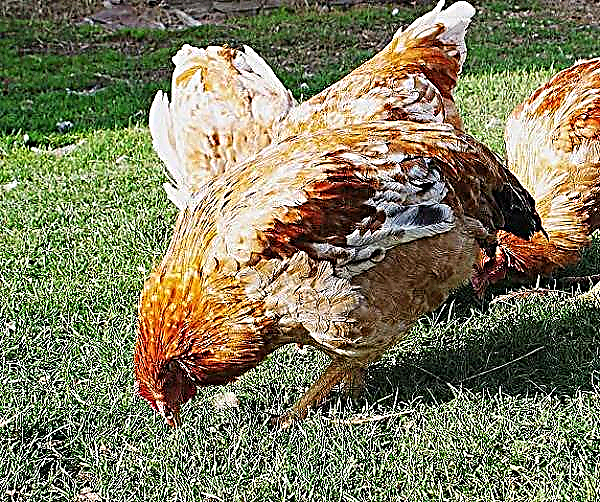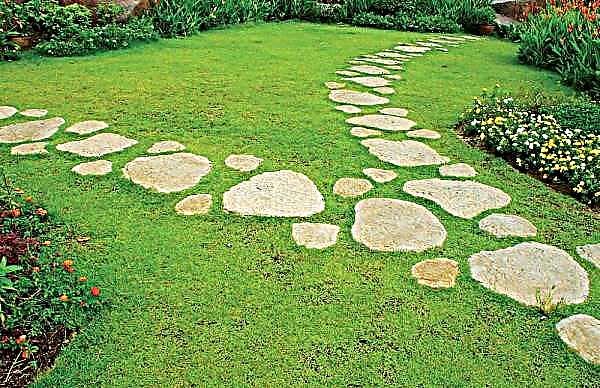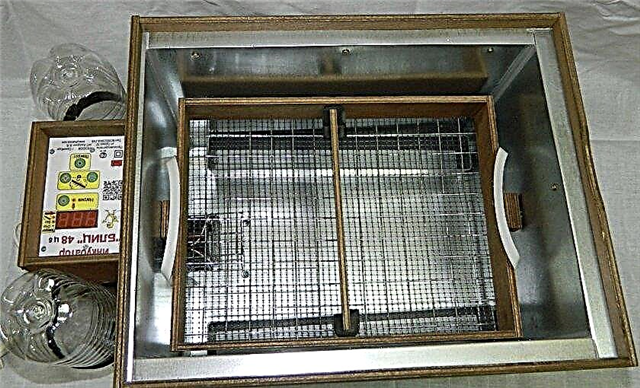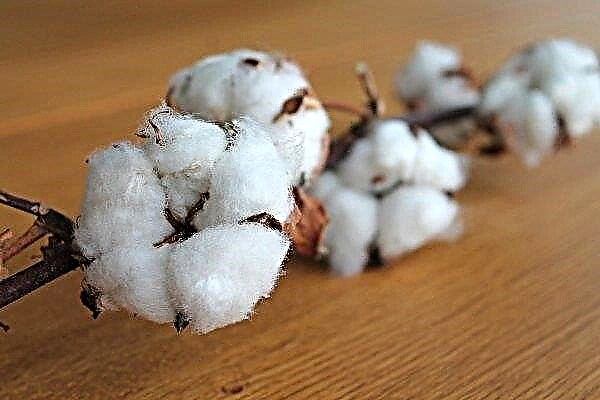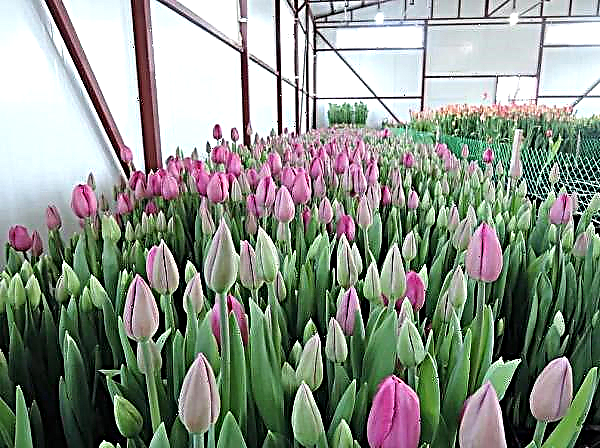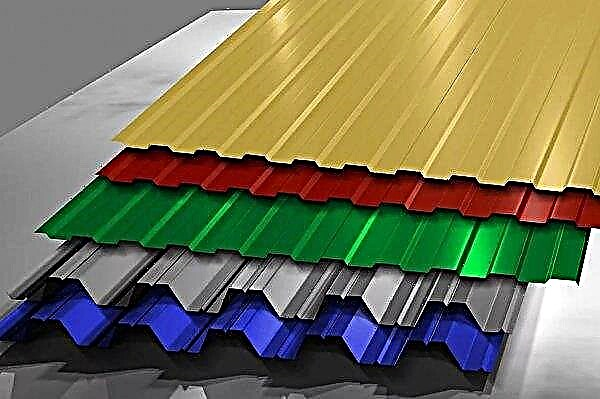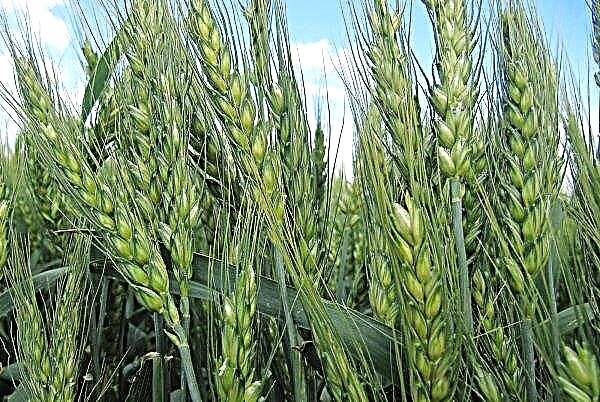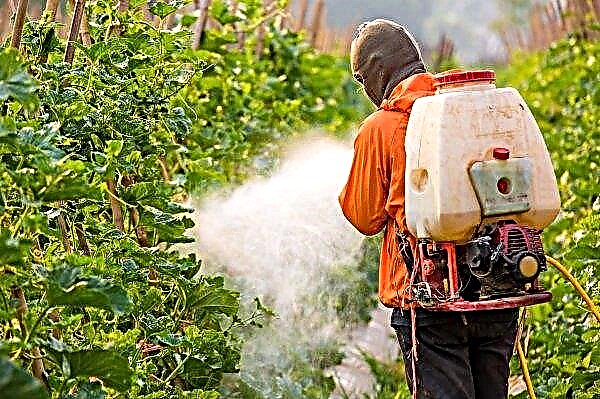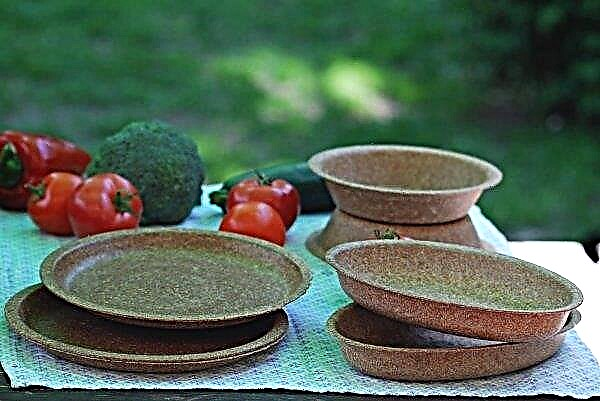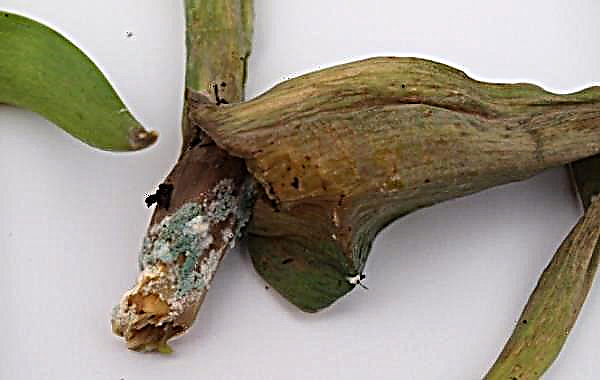Cucumbers are a sought-after product among farmers and housewives who like to delight their family with delicious preservation and fresh salads. The cucumber variety Emerald Earrings F1 has become popular lately, but in order to get a good harvest you need to know how to plant them and how to care for them, and other subtleties that you will learn about in this article.
Characteristic and Description
 F1 emerald catkins, a variety that Moscow breeders bred, is a hybrid of cucumber, a feature of which is early ripening. Shrubs of this variety are of medium height, a female flowering plant, with 8-10 ovaries per node. The size of Zelentsy in the technical stage is 9–11 cm, the fruits are cylindrical in shape, medium in size, with small white spikes all over the skin.
F1 emerald catkins, a variety that Moscow breeders bred, is a hybrid of cucumber, a feature of which is early ripening. Shrubs of this variety are of medium height, a female flowering plant, with 8-10 ovaries per node. The size of Zelentsy in the technical stage is 9–11 cm, the fruits are cylindrical in shape, medium in size, with small white spikes all over the skin.
It has excellent taste and high durability. Emerald earrings differ from other varieties in that the fruit can be used for various purposes. Cucumbers are suitable for pickles, pickles, salads, various snacks, as well as preservation. The fruits of the Emerald Earrings are very juicy and crunchy. Cucumber weighs 100 g.
Advantages and disadvantages of the variety
Cucumbers of the Emerald Earring variety, like other types of this culture, have advantages and disadvantages.
- Benefits:
- resistant to disease;
- refers to an early ripe variety;
- cucumber has a high yield with 1 m² of planted bushes, you can collect 11-12 kg of product;
- suitable for growing both in open ground and in a greenhouse;
- has no voids inside and bitterness;
- passes pre-processing during packaging, so it does not need to be treated with growth stimulants.
Did you know? Breeders from the United Arab Emirates invented a cucumber whose fruits are square in shape.
- Disadvantages:
- increased demand for care when growing;
- not subject to reproduction at home;
- fertility is significantly reduced when growing on a bed.
Optimal time for landing
The best time for planting cucumbers is the end of May, when the upper ball of soil 10 cm deep warms up to + 15 ° C. There is an easier way to determine the appropriate time for planting: when the air temperature in the daytime reaches +22 ... + 24 ° С, and at night - up to + 18 ° С.
Methods of growing and planting varieties
There are two main ways to plant Emerald Earrings:
- using seedlings;
- using seeds.
Next, we consider in more detail each method.
Parthenocarpic varieties of cucumbers also include:
Seedling
Seedling method of sowing consists of several stages:
- Since the seeds in the package have already been processed, they do not need to be soaked with a growth stimulant. Seeds are immediately sown in a cup or a small tray with prepared soil.
- During the growth period, seedlings need to create the right moisture conditions and strengthen the sprout with Immunocytophyte and Epin preparations.
- As soon as the first seedlings appear, they must be transferred to the sun, leaving it on the floor. Thus, the plant hardens and grows, illuminated by a sufficient amount of light.
- When four formed leaves and a strong stem appear, the sprout can be transplanted to a permanent place, as a rule, this happens in May.

In order for the plant to yield a rich harvest, it is necessary to prepare the soil for planting. For this purpose, 13 kg of compost mixed with 40 g of fertilizer must be added to the soil, this volume is designed for 1 m². For a couple of days the bed needs to be moistened and loosened, this process is necessary in order to enrich the soil with oxygen. During planting, you must observe the distance between the bushes in half a meter.
Important! Humidity should be maintained at a level of 90%, and the temperature up to + 30 ° C, until the ovaries are formed.
Open Seed
There is a second method for planting cucumbers of the Emerald variety of catkins - seedlingless. It implies sowing seeds directly into open soil. When choosing a place for future shoots, focus on a site that is not subject to drafts, even and illuminated from all sides. Before sowing, it is necessary to water the soil of the selected place on the site.
Two weeks before planting cucumbers, fertilizers are applied. The seedless method is carried out at the end of May, when the temperature will not be lower than + 15 ° С. The earth is watered, then the seed is laid out in a recess in the soil. Next, water the seedling in the ground again. Each bed should be located at least a half meter apart.

Cucumber care after planting
Cucumbers of this variety are demanding in care. The main requirements are timely watering, fertilizing the soil, as well as the formation and garter of the bush. Next, we consider in more detail how to properly care for this variety.
Top dressing and watering
Watering cucumbers must be done in the evening to prevent burning of foliage. To do this, water is collected in the tank and infused during the day in the sun. In order for the soil to absorb water well before the procedure, it must be loosened.
The first fertilizer is applied 14 days after emergence, then the procedure is repeated four times every 14 days. It is best to apply fertilizer at the time of irrigation, for this use Zircon and HB 101.
Important! As a top dressing, compost of mullein (1:20) and bird droppings (1:10) mixed with water are used.
Bush garter and shaping
The bush of cucumbers of the Emerald variety is distinguished by increased growth, so the liana-like stems must be tied to a support. This procedure is called bush garter. It is recommended to keep this variety on a trellis. She is pulled over the bush, at a height of one and a half to two meters. Using twine, lashes are attached to it. In order for the cucumber bush to be kept in the correct conditions, it is necessary to remove the leaves at the bottom of the stem and the extra stepsons in time, as they select the vitality of the plant.

Soil care
Plant care also includes loosening, mulching and weeding the soil. Loosening is carried out in order to fill the soil with moisture (so the water is better absorbed), as well as to saturate the soil with oxygen, which is very important for the plant. The process of loosening occurs when the topsoil dries a little. Mulching simplifies plant care, since you do not need to loosen the soil from weeds. Various materials are used for this process, the simplest are sawdust or straw.
- In addition, mulching has the following advantages:
- protects the plant from sudden changes in temperature;
- fruiting becomes more active;
- reduced need for watering;
- all nutrients remain in the soil, because they do not erode and are not washed off;
- ripened cucumbers are not on the soil.
Did you know? In ancient Egypt, cucumber was revered so much that it was depicted on the sacrificial table and put in the tomb of the famous pharaohs.
Diseases and pests selection
The cucumber variety Emerald catkins is resistant to various diseases, but at the same time the plant should be treated with Epin and Zircon antistress drugs, and treated with Oksichom and Alirin-B for prevention or when diseases occur.
Storage and Harvesting Rules
Harvesting cucumbers begins from 42-45 days after seedling. Many housewives use part of the harvest as fresh snacks and salads, roll up the rest, and make various canned salads. In order to preserve fresh cucumber for longer, you need to keep them not at room temperature, since they will quickly fade and lose their shape.

They need to be placed in the refrigerator, where they can be stored for another three days. To preserve the vegetable is placed in a plastic or paper bag, and also stored in containers. In this case, you do not need to close the package, it must be open, since cucumbers can deteriorate.
In canned form they are juicy, crispy and, moreover, they are small in size, which will please lovers of medium-sized vegetables. Knowing how to plant a cucumber of this variety and how to properly care for it will help you to harvest a rich harvest. And the juicy taste of the vegetable will complement your table with delicious, amazing dishes.

